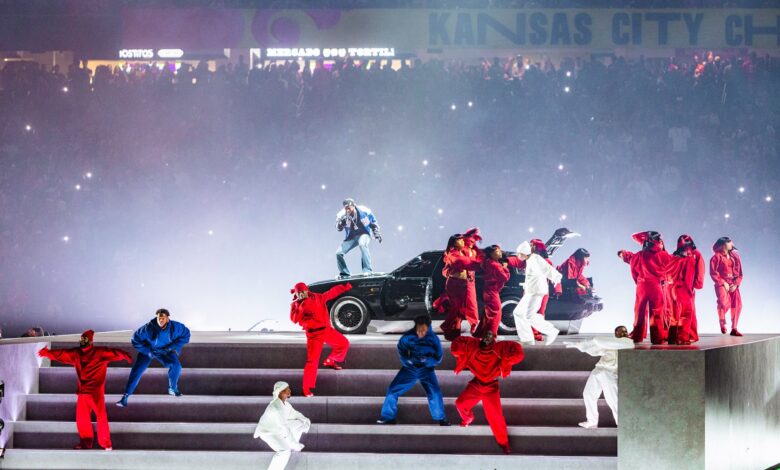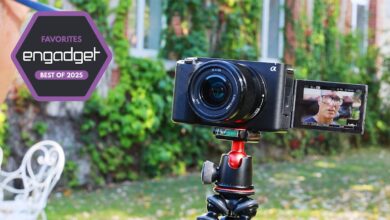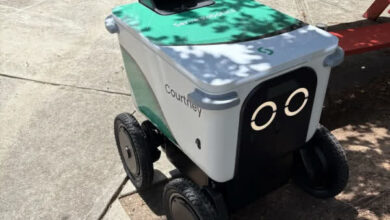The Wild True Story Behind Kendrick Lamar’s Super Bowl Halftime Show

Kendrick Lamar wanted a GNX. Not the one from the cover of his new album of the same name. One that could be gutted and turned into a “clown car” for his Super Bowl LIX halftime show. That’s how Shelley Rodgers, the show’s art director, tells it. Rodgers has solved such big-stage problems for everyone from Beyoncé to Lady Gaga; she won an Emmy for her work on Rihanna’s halftime show in 2023. A car wasn’t a huge deal, but she still needed to find one. They couldn’t borrow Lamar’s own Buick Grand National because they’d kind of need to destroy it to pull off the visual trick.
“That car was not easy to find, especially since he dropped his album,” Rodgers says. “We could have just used his, but I don’t know that he would’ve liked it after.”
Shelley Rodgers has been the art director for Super Bowl halftime shows for everyone from Lady Gaga to Rihanna.
Photograph: Darrell Jackson
Erik Eastland from All Access, the company responsible for fabricating the stage for Sunday’s show, was the one who found what Lamar wanted. Eastland and his team located the GNX at a mom-and-pop car lot in Riverside, California, after a thorough search and at least one near mishap.
The Buick GNX used during Kendrick Lamar’s Super Bowl halftime show came from a dealership in Southern California.
Photograph: Darrell Jackson
As anyone watching the halftime show knows, it worked. Right on cue, as Lamar rapped his way through “Bodies,” the car that Eastland found and gutted popped open to reveal a small army of dancers. It highlighted just one of four stages Lamar used during the halftime show. Each performance space was shaped like a button on a PlayStation-style controller, a performance intended to portray Lamar’s life as a video game.
These polycarbonate panels were used to enclose Kendrick Lamar during his Super Bowl performance.
Photograph: Darrell Jackson
The custom-built streetlights used during the halftime show.
Photograph: Darrell Jackson
That concept came from Lamar himself. Rodgers says she doesn’t know if the concept has anything to do with his highly publicized beef with Drake but will say that Lamar had a vision for what he wanted his show to be, and she made it her mission to execute it. “I think the was symbolic, his way to reach young people,” Rodgers says. “A lot of it is showing his journey, traveling through the American dream.”
Every aspect of the Super Bowl halftime show is meticulously planned to ensure everyone—and everything—gets on and off the field in a matter of minutes.
Photograph: Darrell Jackson
During a press conference held Thursday by the show’s sponsor, Apple Music, Lamar promised to bring “storytelling” in his performance. The “rudimentary shapes” on the field on Sunday were meant to provide a clean, easy-to-understand platform for the rapper to tell that story, says creative director Mike Carson, who worked with Lamar, director Dave Free, and other members of Lamar’s creative company pgLang to develop the halftime show’s look and sound.
“Dave Free and Kendrick are really into keeping things clean and minimal,” Carson adds. “So we went with a monochromatic concrete look and allowed the video game motif to come alive through dialogue, lighting, choreography, and music.”
A field plan showing the placement of stages, cameras, and other equipment necessary to pull off Kendrick Lamar’s Super Bowl halftime show.
Graph: Courtesy of Tribe, Inc. and All Access
Concept art for Kendrick Lamar’s Super Bowl halftime show.
Graph: Courtesy of Tribe, Inc. and All Access
Working with artists who know exactly what they want isn’t always a given. Some come to Rodgers and her colleagues and say, “What do you got?” she says. Lamar, Free, and Carson came to the table with the idea. Rodgers and her crew at Tribe Inc., which was founded by her husband, production designer Bruce Rodgers, and has been designing the Super Bowl halftime show for nearly two decades, just needed to make it work.
The idea to have the halftime show performance space evoke video games came from Kendrick Lamar and his frequent collaborators Mike Carson and Dave Free.
Photograph: Darrell Jackson
All of the staging, lights, and performers have to get on the field in 7.5 minutes and then off of it 6 minutes after the performance ends.
Photograph: Darrell Jackson
“They were on board with our vision from day one,” Carson says. “Even with this being one of the largest halftime footprints ever, Shelley and team came with clever ideas and guidance to help us maintain the design integrity and get this beast across the finish line.”
While “making it work” means one thing when you’re putting on a Madonna concert or the Democratic National Convention, it means something different when you’re trying to squeeze it into a national title match between the Kansas City Chiefs and the Philadelphia Eagles. For one, you have to get all of the staging, lights, dancers, and the artist themselves onto the field in 7.5 minutes and then get them off 6 minutes after the final note. For another, you have to do all of this on a field where the biggest NFL game of the year is being played—without screwing up the turf.
The “turf tires” that equipment carts ride on to protect the field.
Photograph: Darrell Jackson
Large custom tarps were laid out onto the field prior to the halftime show.
Photograph: Darrell Jackson
Fields are very important in the NFL. Two years ago, when the Rodgerses (both of them) did the Rihanna show, they created platforms that floated above the playing area to keep Rihanna off the grass. They caught a break this year; the Superdome in New Orleans has a synthetic field, which is far more resilient than the natural turf at State Farm Stadium in Glendale, Arizona.
These streetlights were constructed to hold dancers during the performance.
Photograph: Darrell Jackson
The tires on halftime show equipment carts are made to protect the Super Bowl field.
Photograph: Darrell Jackson
Limitations have been fueling halftime show innovations for years, says the NFL’s head of music, Seth Dudowsky. For years, he says, the show simply required setting up a stage for a rock band and taking it down. A little over a decade ago, when artists like Madonna and Katy Perry started doing the show, they brought a desire to make it more theatrical and concert-like. When the Weeknd performed in 2021, Covid-19 restrictions as well as field restrictions dictated that most of the performance take place on stages built around Raymond James Stadium in Tampa, Florida.
The Weeknd’s performance “allowed us to break the mold,” Dudowsky says. The following year, when Dr. Dre, Snoop Dogg, Mary J. Blige, 50 Cent, Eminem, and Lamar performed, halftime organizers were able to erect 25-foot stages and get them on and off the field in a matter of minutes. Each time, the Rodgerses and All Access have figured out how to make it happen.
Protecting the field is essential in the NFL.
Photograph: Darrell Jackson
“Each year, each creative pushes the envelope,” Dudowsky says. “But then you have this amazing art team and production design team that pulls it back into reality and says, ‘How are we going to do this in the time we have, in the building we have, and make it something that we can actually execute for a Super Bowl halftime show?’”
For Lamar’s video game-themed show that meant more than 50 carts of staging and equipment—each weighing between 1,500 and 3,500 pounds—to be rolled out in the center of the stadium. To protect the field, the carts rode on specially designed wheels (“turf tires” is their nontechnical name), so the playing surface remains ready for the game’s second half.
Those precious minutes aren’t the only time crunch the organizers are under. As halftime shows get “bigger and bigger,” Eastland says, “the time that we get to build” doesn’t increase.
Lamar announced he’d be performing at the Super Bowl on September 8. Then he had until Thanksgiving to come up with a concept for the show. By the time everyone agreed on the plan and Eastland could start building stages—“cutting metal” as he calls it—it was early December. When we spoke in mid-January, he was loading the last of the 25 trucks his crew would drive from Southern California to New Orleans. (Luckily, none of All Access’ facilities were affected by the Los Angeles area wildfires, but some of the rehearsals did get postponed.)
There was one other restriction: the stadium entrances. Unlike some arenas, the Superdome has only one main tunnel that organizers could use to bring everything onto the field for Sunday’s show—and it dumps out right into a field goalpost. Eastland had less than 10 feet of clearance to get everything through. “It’s a field that’s not our favorite, because it’s that one tunnel that we all come flying through with 3,000 people,” Eastland says. “There’s the goalpost right there, dead center.”
Setting up for the Super Bowl halftime show must be done in a matter of minutes.
Photograph: Darrell Jackson
Crews of dozens of people set up each stage and tear it back down after the performance.
Photograph: Darrell Jackson
So, about that GNX. While Eastland is “good at finding stuff like that,” Shelley Rodgers says it was still a challenge. Ever since Lamar released GNX, the 1980s two-door Buicks have seen a surge in popularity. Car aficionados have long held the GNX in high regard, and Eastland presumed no one who has maintained one of the cars for nearly four decades would want to sell it to someone planning to tear it apart.
Even those willing to sell presented peculiar problems. Before he located the one All Access eventually bought, Eastland’s car guy found himself in a pickle when a potential seller said their name wasn’t on the title because the owner was dead.
All Access, the company responsible for fabricating the stage for Sunday’s show, found the vintage GNX used during the performance.
Photograph: Darrell Jackson
“I don’t know if it was stolen or not, but that’s the kind of nonsense that we can run into,” Eastland says, recounting the story. “I think at the end of the day, it could have been a lot harder.”
Once he got the car from a used car lot in Riverside, he still had to gut it—something even he admits was “sacrilegious.” But, Eastland argues, the people who appreciate Lamar’s music and his passion for the GNX were “going to need to see the car and not a cheap imposter” during Sunday’s halftime show.
Still, I have to ask, could the car be put back together again? Sadly, no. It could go on tour with Lamar, Eastland says, but its days as a street-legal vehicle are over. Eastland says he’s lucky he bought the GNX before its appearance in the halftime show drives up its value on the used market even more. “I got to believe that the price for these things is going to go way up for a while.”
Lamar, and the GNX, now go down in history.


